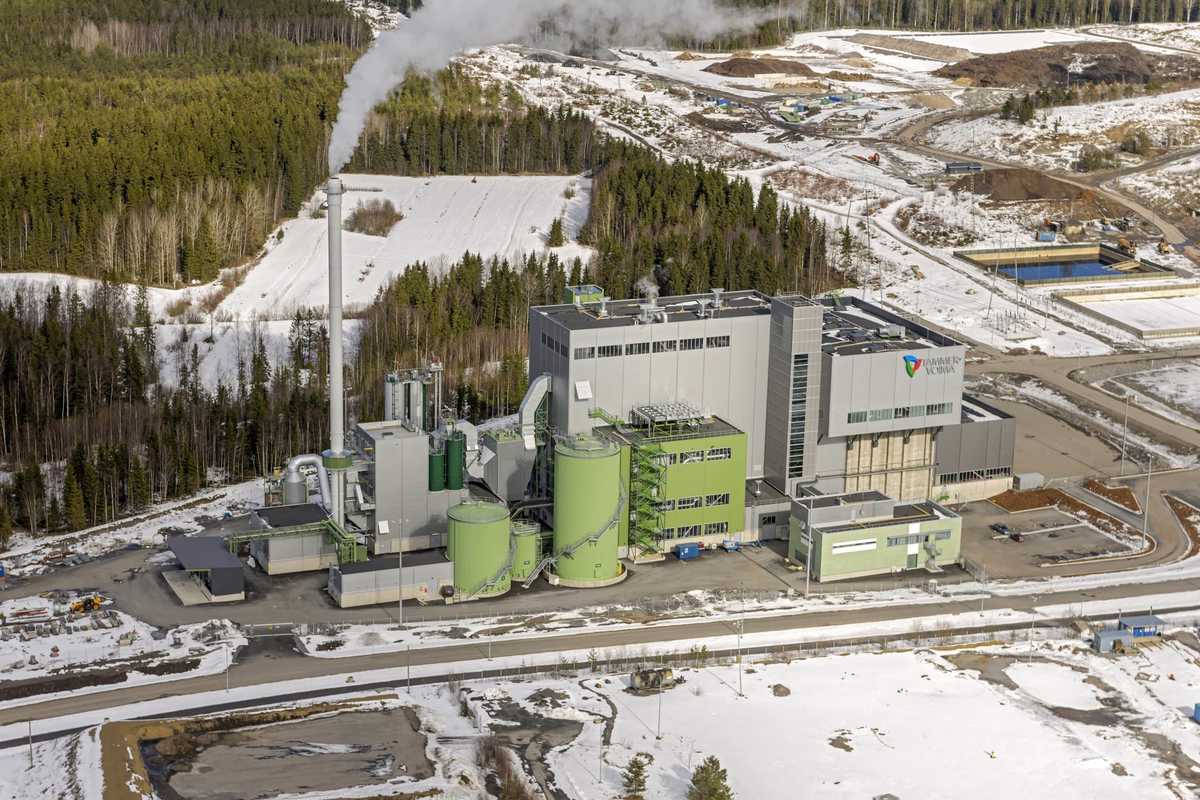Gasum plans to supply e-methane to the shipping industry from 2026
Finnish state-owned energy firm Gasum has signed an e-methane offtake agreement with project development company Nordic Ren-Gas.
 PHOTO: Tammervoima waste incineration plant in Tampere, Finland. Nordic Ren-Gas
PHOTO: Tammervoima waste incineration plant in Tampere, Finland. Nordic Ren-Gas
Nordic Ren-Gas will “develop, build and operate a power-to-gas [P2X] facility” in Tampere, Finland.
The plant will produce around 160 gigawatt hours per year (GWh/year) of e-methane from 2026. It is roughly equivalent to around 10,471 mt/year in a liquefied state, according to ENGINE calculations.
“In the power-to-gas process, [green] hydrogen is first produced using renewable electricity and water,” Ren Gas explains. “The hydrogen is then further processed into e-methane by combining it with biogenic CO2.”
This project will capture biogenic CO2 from the Tammervoima waste treatment plant in Tampere.
“The e-methane produced in this way is completely renewable and will replace the use of fossil fuels in the transport, shipping and industrial sectors,” Gasum says.
Gasum will purchase the entire capacity and supply it to its clients, including the shipping industry.
e-methane over LNG as a transitional fuel
LNG may offer reduced CO2 emissions compared to conventional marine fuels such as VLSFO and HSFO in the near-term.
However, LNG has higher well-to-wake greenhouse (GHG) emissions than conventional marine fuels because of its higher upstream methane emissions, and these are primarily due to leakages during extraction, processing, and transport, according to a whitepaper published US non-profit International Council on Clean Transportation (ICCT). These methane emissions can offset lowered CO2 emissions.
Methane is a potent GHG that traps 86 times more heat than CO2 does. When LNG is used in a low-pressure injection dual-fuel (LPDF) engine and methane slips from upstream and downstream processes are taken into account, then LNG emits about 34% more lifecycle emissions than MGO over a 20-year period. LNG also emits about 33% more lifecycle emissions than VLSFO over a 20-year period, the ICCT whitepaper says.
ICCT's whitepaper is based on data from the Intergovernmental Panel on Climate Change (IPCC).
According to ICCT, the LNG vessels currently operating mostly have LPDF engines.
Despite this, LNG has emerged as a preferred alternative for low-carbon bunkering due to its wider availability and technological readiness. While other fuels with zero-emission potential, such as ammonia and methanol, are still under development, LNG offers a feasible option in the short term for ocean-going vessels.
Its growing demand is evident from the data. Classification society DNV's latest figures show that there are 1,006 now LNG-capable vessels, in operation, or on order for delivery by 2028.
Since e-methane and LNG are essentially methane molecules produced in different ways, e-methane can be used as a drop-in fuel for LNG-capable vessels without the need for any modifications. It can replace LNG as a bunker fuel to significantly lower a vessel’s carbon footprint.
E-methane is also susceptible to methane leakage on combustion, but it will be very low when compared to LNG, reducing the fuel's GHG emissions from a well-to-wake perspective.
By Konica Bhatt
Please get in touch with comments or additional info to news@engine.online





